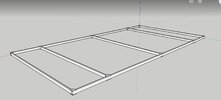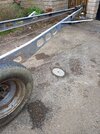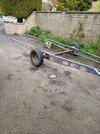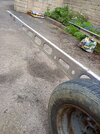Not sure if this is the correct thread?
My son is building a car trailer, using the rolling chassis from a caravan. He's CADed it all up and tbh it's looking pretty good. I'm giving it a sense check but my knowledge is limited. I'm looking for some advice on steel strengths, max hole sizes and possibly someone to cast an eye over the design, if anyone fancies it?
Any takers?
Thanks in advance.
My son is building a car trailer, using the rolling chassis from a caravan. He's CADed it all up and tbh it's looking pretty good. I'm giving it a sense check but my knowledge is limited. I'm looking for some advice on steel strengths, max hole sizes and possibly someone to cast an eye over the design, if anyone fancies it?
Any takers?
Thanks in advance.








